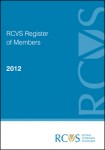Are you a Registered Veterinary Nurse? Are you looking for a new challenge away from a veterinary practice? Well this may be the ideal opportunity as the army are now recruiting RVNs between the age of 17 1/2 to 32 years 11 months.
The role is to look after sick and injured animals, primarily dogs and horses as well as supporting veterinary officers in the treatment of animals in peace and on military operations.
To find out more information there is a recruitment event being held on 31 January 2013, where the Director of the RAVC, Colonel Neil Smith BVetMed MSc MDA MA MRCVS Late RAVC QHVS will give a presentation.
With a competitive salary and excellent prospects, this is the ideal role for someone looking for a challenge.
What: Recruiting event to get the most current information regarding this role.
When: 31 January 2013
Time: 1-3pm
Where: Former Army Staff College, HQ AMD, Slim Road, Camberley, Surrey, GU15 4NP
Interested? Call Captain Mark Gibbs on 01276 412668 or e-mail mark.gibbs818@mod.uk



